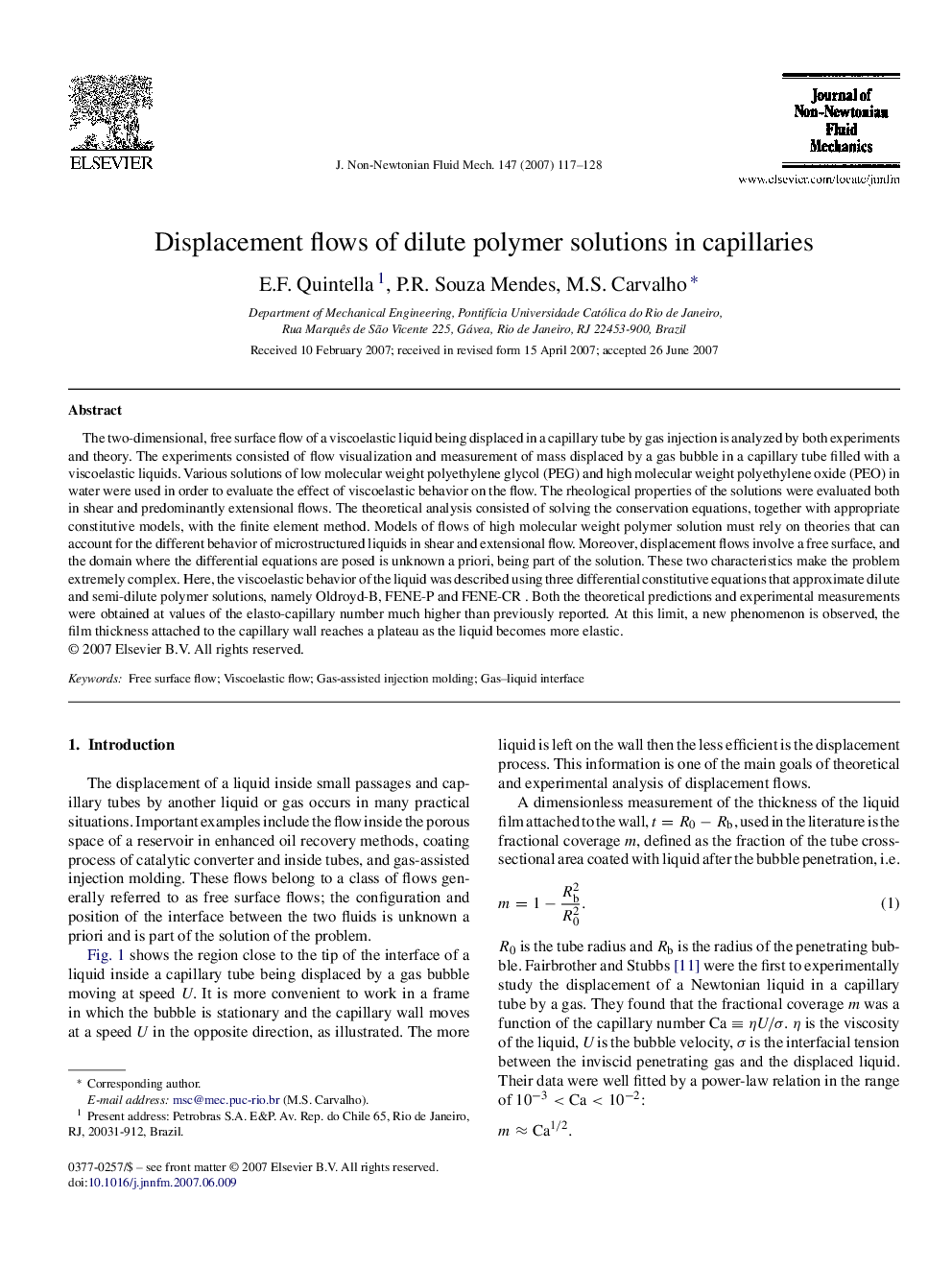| Article ID | Journal | Published Year | Pages | File Type |
|---|---|---|---|---|
| 671449 | Journal of Non-Newtonian Fluid Mechanics | 2007 | 12 Pages |
The two-dimensional, free surface flow of a viscoelastic liquid being displaced in a capillary tube by gas injection is analyzed by both experiments and theory. The experiments consisted of flow visualization and measurement of mass displaced by a gas bubble in a capillary tube filled with a viscoelastic liquids. Various solutions of low molecular weight polyethylene glycol (PEG) and high molecular weight polyethylene oxide (PEO) in water were used in order to evaluate the effect of viscoelastic behavior on the flow. The rheological properties of the solutions were evaluated both in shear and predominantly extensional flows. The theoretical analysis consisted of solving the conservation equations, together with appropriate constitutive models, with the finite element method. Models of flows of high molecular weight polymer solution must rely on theories that can account for the different behavior of microstructured liquids in shear and extensional flow. Moreover, displacement flows involve a free surface, and the domain where the differential equations are posed is unknown a priori, being part of the solution. These two characteristics make the problem extremely complex. Here, the viscoelastic behavior of the liquid was described using three differential constitutive equations that approximate dilute and semi-dilute polymer solutions, namely Oldroyd-B, FENE-P and FENE-CR . Both the theoretical predictions and experimental measurements were obtained at values of the elasto-capillary number much higher than previously reported. At this limit, a new phenomenon is observed, the film thickness attached to the capillary wall reaches a plateau as the liquid becomes more elastic.
